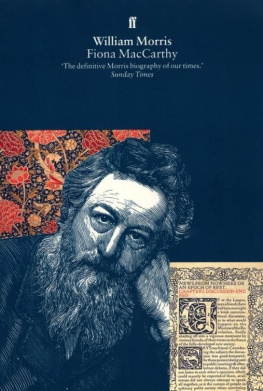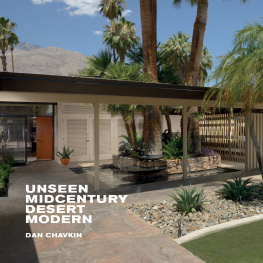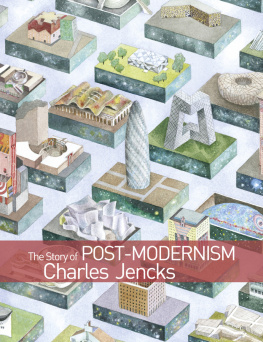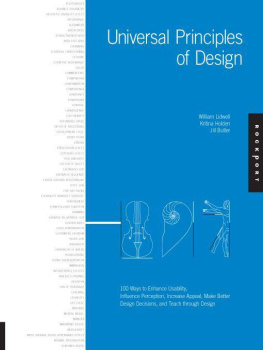PENGUIN BOOKS
PIONEERS OF MODERN DESIGN
Sir Nikolaus Pevsner was born in 1902 and educated at Leipzig. He took a Ph.D. in the History of Art and Architecture in 1924 and was successively connected with the Universities of Leipzig, Munich, Berlin and Frankfurt. For five years he was on the staff of the Dresden Gallery, and whilst a lecturer at Gttingen University from 1929 to 1933 he specialized in the history of art in Great Britain. From 1949 to 1955 he was Slade Professor of Fine Art and a Fellow of St John's College, Cambridge. In 1959 he became Professor of the History of Art at Birkbeck College, University of London, and he remained there until his retirement in 1969 when he became Emeritus Professor.
From its inception he edited the Pelican History of Art and Architecture and wrote most of The Buildings of England by counties, as well as editing the whole series. He was a Royal Gold Medalist of the R.I.B.A., and honorary doctor of Leicester, York, Leeds, Oxford, Cambridge, East Anglia, Zagreb, Keele, Heriot-Watt, Edinburgh and Pennsylvania Universities, an honorary fellow of St John's College, Cambridge, F.S.A. and F.B.A. He was appointed C.B.E. in 1953 and received knighthood in 1969.
His book on Italian Painting from the end of the Renaissance to the end of the Rococo is considered a standard work, and among his other publications are: An Inquiry into Industrial Art in England, German Baroque Sculpture, An Outline of European Architecture, High Victorian Design, Sources of Modern Art, The Englishness of English Art (Reith Lectures, 1955). He also wrote Studies in Art, Architecture and Design, The Anti-Rationalists, Some Architectural Writers of the Nineteenth Century and A History of Building Types, which won the Wolfson Literary Award; and he is co-author of the Penguin Dictionary of Architecture.
Sir Nikolaus died on 18 August 1983. In his obituary The Times wrote: He won the admiration of scholars all over the world and of all shades of opinion through the breadth of his knowledge and the quality of his writing He had a great capacity for getting down to essentials in any phase of art and for distinguishing between what was inevitable in the circumstances and what was likely to blow over as a passing fashion. His judgements were often refreshingly unconventional for the simple reason that they were consistent.
Nikolaus Pevsner
PIONEERS OF MODERN DESIGN
FROM
WILLIAM MORRIS
TO
WALTER GROPIUS

Penguin Books
PENGUIN BOOKS
Published by the Penguin Group
Penguin Books Ltd, 80 Strand, London WC2R 0RL , England
Penguin Putnam Inc., 375 Hudson Street, New York, New York 10014, USA
Penguin Books Australia Ltd, 250 Camberwell Road, Camberwell, Victoria 3124, Australia
Penguin Books Canada Ltd, 10 Alcorn Avenue, Toronto, Ontario Canada M4V 3B2
Penguin Books India (P) Ltd, 11 Community Centre, Panchsheel Park, New Delhi-110 017, India
Penguin Books (NZ) Ltd, Cnr Rosedale and Airborne Roads, Albany, Auckland, New Zealand
Penguin Books (South Africa) (Pty) Ltd, 24 Sturdee Avenue, Rosebank 2196, South Africa
Penguin Books Ltd, Registered Offices: 80 Strand, London WC2R 0RL , England
www.penguin.com
First published by Faber & Faber under the title Pioneers of the Modern Movement 1936
Second edition published by The Museum of Modern Art, New York 1949 this revised and partly rewritten edition published in Pelican Books 1960
Reprinted with revisions 1975
Reprinted in Peregrine Books 1986
Reprinted in Penguin Books 1991
Copyright 1936 by Nikolaus Pevsner
Copyright 1949 by the Museum of Modern Art
Copyright Nikolaus Pevsner, 1960, 1975
All rights reserved
Except in the United States of America, this book is sold subject to the condition that it shall not, by way of trade or otherwise, be lent, re-sold, hired out, or otherwise circulated without the publisher's prior consent in any form of binding or cover other than that in which it is published and without a similar condition including this condition being imposed upon the subsequent purchaser
ISBN: 978-0-14-193232-3
To
T.B., T.B., W.B., W.A.C.,
W.G.C., J.P. and D.F., P.S.F.,
P. and E.G., H.R., F.M.W.,
the A.A.C., the C.I.
in gratitude
Contents
List of Plates
Foreword to the First Edition
M OST of the preparatory work for this book was done during the years 193032. I held a class on the architecture of the nineteenth and twentieth centuries at Gttingen University in 1930, and then published, in the Gttingische Gelehrte Anzeigen of 1931, a short preliminary account of the parts played by the most important architects in the development of the Modern Movement.
However, as far as books on the subject are concerned, this is, if I am not mistaken, the first to be published. I am well aware of its shortcomings, and shall be grateful to anybody who may be able to draw my attention to sins of omission or of commission.
I did not know of P. Morton Shand's excellent articles in the Architectural Review of 1933, 1934, 1935 until I had almost finished my research. The fact that our conclusions coincide in so many ways is a gratifying confirmation of the views put forward in this book.
I feel greatly indebted to Geoffrey Baker, Katharine Munro, and Alec Clifton-Taylor, who tried to eliminate from my text the worst clumsiness of a foreign style. Yet I am afraid it is still badly lacking in that supple precision which distinguishes well-written English.
I also want to place on record my gratitude to my mother, Frau Annie Pevsner, who used a time of unwelcome leisure for transforming an illegible into a readable and printable manuscript, and to Mr Richard de la Mare who with great kindness and understanding dealt with all matters of layout, printing, and illustration.
NIKOLAUS PEVSNER
London, May 1936
Foreword to the Second Edition
T HE Museum of Modern Art has increased the scope of this book considerably by raising the total number of illustrations from 84 to 137; I have tried to improve the text by corrections, where I had made mistakes, and by additions which vary in length from a line to a virtual rewriting of a whole chapter. For suggestions as to what should be altered and added I wish to thank Philip Johnson, Edgar Kaufman Jr, Henry-Russell Hitchcock, and Alfred H. Barr Jr. But my greatest gratitude is to Herwin Schaefer who has followed the book untiringly through all its stages from manuscript to printed page and never ceased to improve it by queries, checking, and research.
London, December 1948
Foreword to the Pelican Edition
T HERE were twelve years between the first and the second editions of this book; there have now been twelve between that second edition and this Pelican edition. Far more research has been devoted during these twelve years to the period with which my book deals than there had been in the preceding twelve. It is gratifying to see that a subject which, when I first tackled it, was shunned by serious scholars has now become the happy hunting ground for American and German and indeed some English students busy on theses, dissertations, or otherwise. Their work, especially that of Madsen, Dr Schmutzler, and Dr Banham, has caused many additions and alterations, none, however, I am happy to say, of such a kind as to rock the structure of my argument. There were, however, places where I felt some slight shaking and had to do a securing job. On the surface it seems as if there were no more than two: Gaud and Sant'Elia. They had both led a humble existence in the footnotes so far and the necessity was unquestionable of raising them to prominent positions in the body of the text. This resurrection is symptomatic.
Next page









